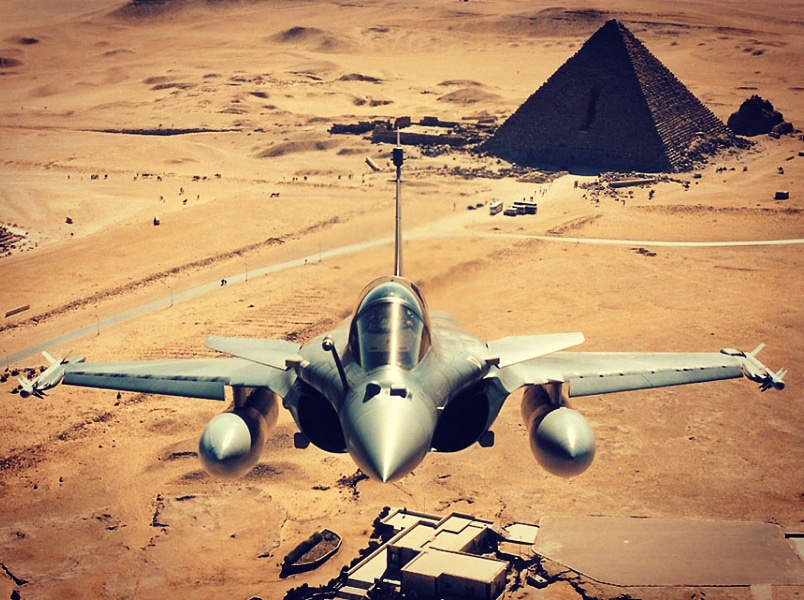Egypt Reportedly Acquires Chinese-Made HD-1A Cruise Missiles: Paired with Rafale Jets?
The pairing of Egypt's French-made Rafale fighter jets with the Chinese-built HD-1A cruise missiles is poised to solidify the North African nation's position as a regional military power while potentially eroding Israel's qualitative military edge.

(DEFENCE SECURITY ASIA) – Israeli media reports suggest that Egypt may acquire the Chinese-made Guangdong Hongda HD-1A long-range cruise missile to pair with its fleet of Rafale fighter jets.
This combination of Egypt’s French-built Rafale jets and the HD-1A missiles could strengthen the North African nation’s position as a regional military power.
The HD-1A cruise missile boasts a range of 290 km, enabling precise strikes on distant targets.
While reports indicate the missiles will be integrated with the Rafale jets, there is also speculation that they may be paired with the Chinese-made J-10C fighters.
In September, Egypt reportedly decided to procure J-10C fighters to replace its aging fleet of U.S.-made F-16 jets.
Egypt is now the second country after Pakistan to acquire the 4.5-generation J-10C, purchasing 25 of the advanced aircraft.


This move signals Egypt’s intent to strengthen ties with China, despite being a close ally of the United States.
Defense analysts suggest that Egypt’s decision to acquire the HD-1A missiles follows challenges in obtaining the European-made SCALP-EG cruise missiles from MBDA, which are typically paired with Rafale jets.
This difficulty stems from objections by the U.S. and Israel, which fear the SCALP-EG’s capabilities could undermine Israel’s Qualitative Military Edge (QME) in the Middle East.
Egypt has faced similar hurdles in acquiring MBDA’s long-range air-to-air METEOR missiles for the same reasons.
The Chinese-made HD-1A missiles offer Egypt a precision-strike capability over long distances, providing a strategic advantage in modern warfare.
These systems could significantly enhance Cairo’s deterrence capacity and allow it to target strategic objectives beyond the range of its current missile systems.


This acquisition aligns with Egypt’s broader strategy to diversify its defense procurement sources, reducing reliance on Western nations.
The deepening defense collaboration between Egypt and China is seen as a strategic shift in Cairo’s military policies.
At the 2024 China Airshow in Zhuhai, a model of the Rafale jet equipped with two Guangdong Hongda HD-1A missiles was showcased.
While initially perceived as a marketing tactic for Chinese weaponry, the display has fueled speculation about the missile’s integration with Rafale jets.
The HD-1A cruise missile, developed by China’s Guangdong Hongda Blasting Co. Ltd., is part of a missile family derived from Ukraine’s Bliskavka missile technology.
Measuring 5.7 meters in length with a launch weight of approximately 1,200 kg, the missile is powered by a solid-fuel ramjet engine, enabling speeds of up to Mach 3.5.

The HD-1A can strike targets up to 290 km away within minutes. Its air-launched variant features infrared imaging guidance, while the land-based HD-1C variant uses active radar for anti-ship missions.
Navigation relies on a combination of inertial and GPS systems, achieving a Circular Error Probable (CEP) of 20 meters, which improves to 10 meters with infrared guidance.
Equipped with a 240-kg high-explosive fragmentation warhead, the HD-1A is designed to inflict significant damage on land and sea targets.
The missile is primarily launched from aerial platforms, while its ground-based counterpart uses a 10×10 truck launcher with four missiles.
The HD-1A’s acquisition represents a potential game-changer for Egypt, bolstering its military capabilities and highlighting its strategic defense diversification. – DSA



Comments are closed.